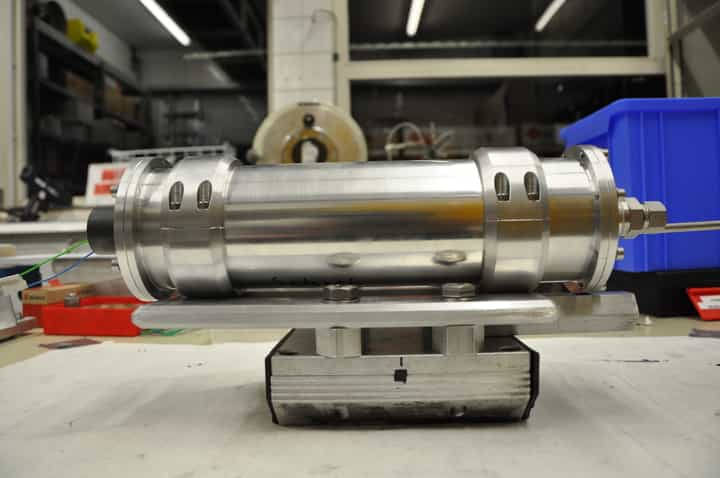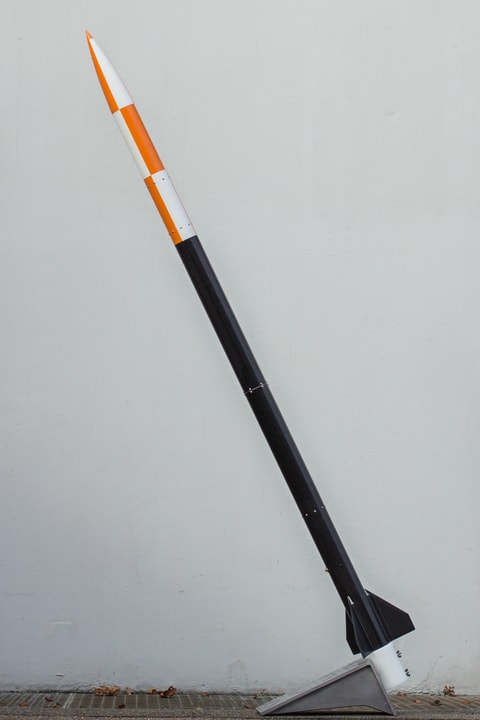MIRAS was developed as a demonstrator for the STERN (STudent ExpeRimeNtal rockets) program of the German Aerospace Center (DLR). Core of the rocket is the 500N hybrid motor, a subscale version of our HyReS engine. MIRAS‘ engine was continously improved throughout more than 100 ground tests at test bench M11.5 of the DLR’s space propulsion department in Lampoldshausen. Among the improved features are higher efficiency, reliability and combustion stability. The rocket is propelled by a paraffin-based solid fuel, which is combined with liquid nitrous oxide and burned in the combustion chamber. All of these tests resulted in a combustible that is not only optimized towards the desirable combustion characteristics, but also capable of enduring the high mechanical loads occuring during a rocket flight with high acceleration.
The key technological components and features of rocket and Ground Support Equipment (GSE) developed for MIRAS are:
- A rocket structure completely made out of lightweight fiber composite/li>
- A proprietary hybrid rocket engine, powered by paraffin and nitrous oxide
- Proprietary pyro valves with quick opening time and minimum pressure drops
- A lightweight aluminum tank
- A two-stage recovery system
- On-board electronics with in-flight telemetry transmissions
- GSE remote controls: nitrous oxide refuelling and removal of transfer hose are controlled from a safe distance
This launch is part of DLR’s STERN program at University of Stuttgart and allowed us to test many essential concepts. MIRAS was crucial for the success of HEROS, and showed that the goals set for the STERN programme were indeed achievable.

